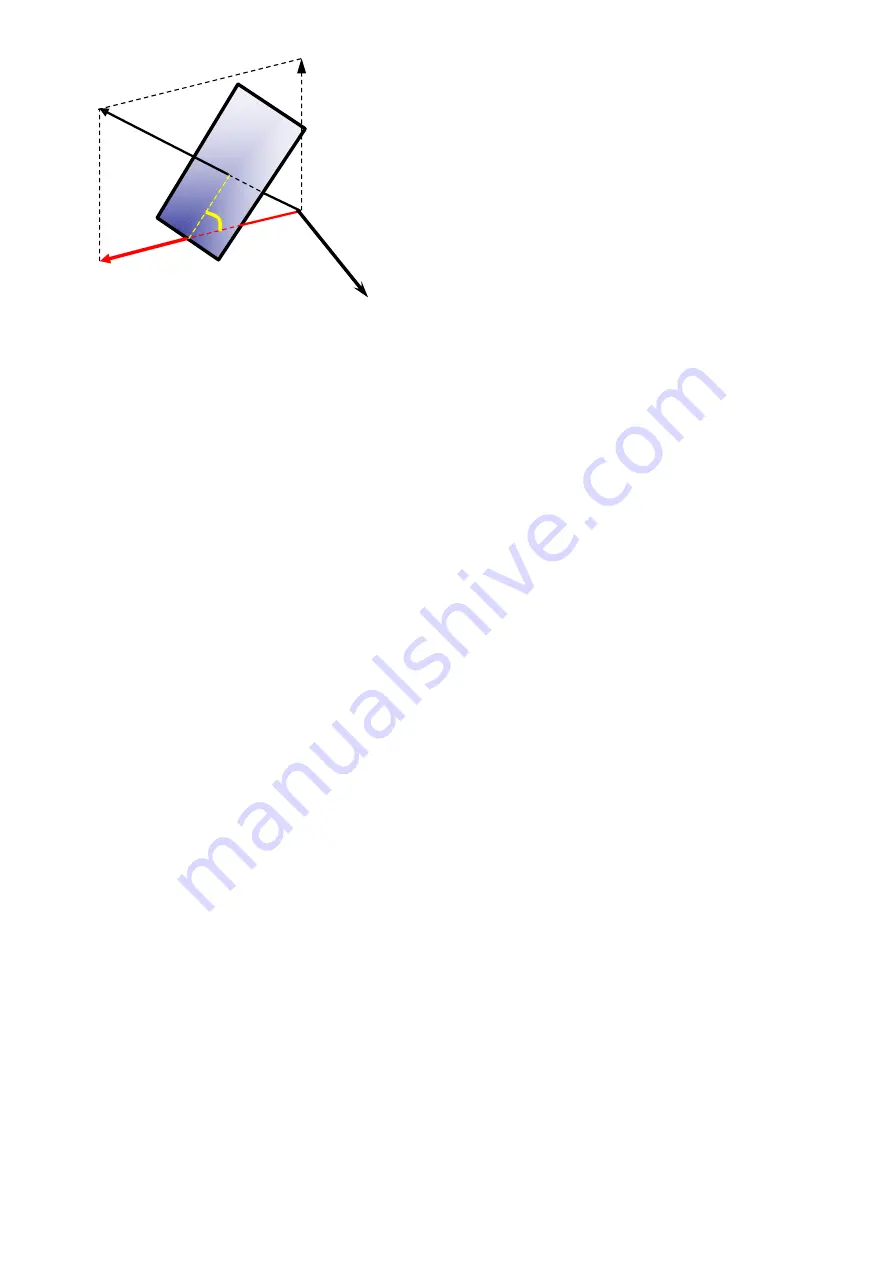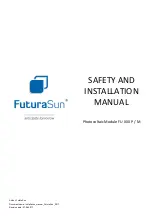
4
FuturaSun srl – The specifications in this manual are subject to revisions without further notice
Fig. 2:
Orientation Vs. Azimuth
2. Disclaimer of Liability
Since the methods of system design, installation
techniques, handling and use of this product are
beyond company control; FUTURASUN does not
assume responsibility and expressly disclaims
liability, for loss, damage or expense resulting from
improper installation, handling or use.
3. IEC 61215 & 61730 certifications
This product meets or exceeds the requirements
set forth by IEC 61215 and 61730 for PV Modules.
These standards cover flat-plate PV modules and
panels intended for installation on buildings or
those intended to be freestanding.
This product is
not intended for use where artificially concentrated
sunlight is applied to the module.
4. Limited Warranty
Please refer to FUTURASUN General Terms and
Conditions of Sale for details of the modules’
limited warranty. Failure to comply with this Safety
and
Installation
Manual
will
invalidate
FUTURASUN Warranty for the PV modules as
stated in the General Terms and Conditions of
Sale.
5. Module Specification
Please refer to the technical datasheet for the
module FUTURASUN FU XXX respectively for
electrical performance data. These electrical data
are measured under Standard Test Conditions
(STC) of 1000 W/m
2
irradiance, with Air Mass (AM)
of 1.5 spectrum, and a cell temperature of 25°C.
6. Safety Precautions
Installation should be performed only by
authorized personnel!
•
Module installation must be performed in
compliance with the latest IEC code (CEI in
Italy)
•
Within the modules, there are no user
serviceable parts. Do not attempt to repair any
part of the modules. Contact your module
supplier if maintenance is necessary
•
In order to reduce the risk of electric shock,
prior to installing the modules, remove metallic
jewelry and use insulated tools during
installation.
•
Do not expose the modules to artificially
concentrated sunlight!
•
Do not stand on, drop, scratch, or allow objects
to fall on the modules.
•
Do not lift the modules at the connectors or
junction box!
•
Do not install or handle the modules when they
are wet or during periods of high winds.
•
Do not use oil-based lubricants on any part of
the junction box as this can cause long-term
damage to the plastics.
•
Ensure that wire cable connections are routed
in accordance with the junction box
manufacturer’s recommendations. Incorrect
routing of the wire cable can lead to stress
damage to the junction box.
•
The minimum cable diameter for the modules
intended for field wiring is 4 mm².
•
The PV connectors to mate with the modules
should be MC4 compatible and qualified
according to IEC 62852.
The rated voltage of the connector should be
1500 V and the rated current ≥ 30 A.
The cross section for the connector is 1 x 4,0
mm².
•
Do not leave cable connectors exposed in
adverse climatic conditions. Water and dust
deposits inside the cable connectors can cause
long-term damage.
•
Broken module glass, a torn back sheet, a
broken junction box or broken connectors are
electrical safety hazards; consequently,
contact with a damaged module can cause
electric shock.
•
The total voltage of modules connected in
series corresponds to the sum of the voltages
of the single modules; whereas connecting the
modules in parallel results in adding up the
currents. Consequently, strings of inter-
connected modules can produce high voltages
and high currents and constitute an increased
risk of electric shock and may cause injury or
death.
•
For installation, maintenance, or before making
any electrical connection or disconnection,
ensure all modules in the PV array are
exposed to a light intensity that is less than
400 W/m
2
!!
If necessary, the modules should
be covered with an opaque cloth or other
material in order to shield them from exposure
to light intensity greater than 400 W/m
2
.
East
b
South





























